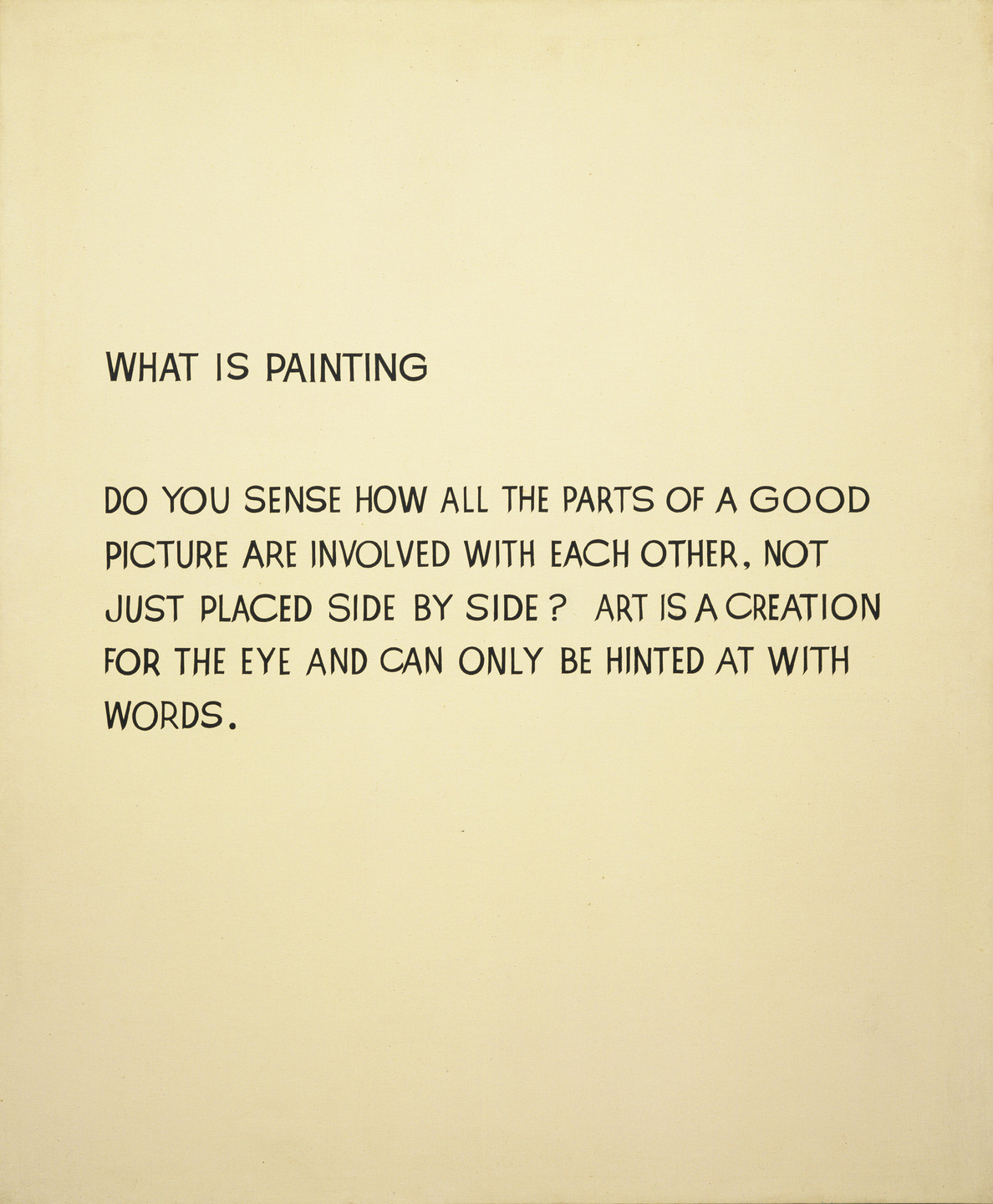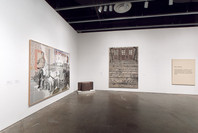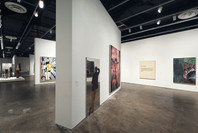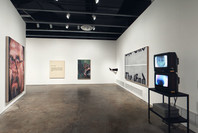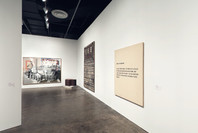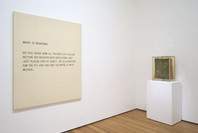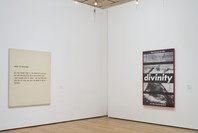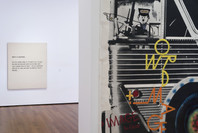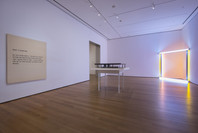In the mid-1960s Baldessari began to reconsider not just painting but the practice of artmaking itself. Isolated from major art centers, living in sleepy National City, near San Diego, California, Baldessari thought about his painting activity and realized that texts—intellectual, occasionally ironic strings of words in particular—could often express artistic solutions better than representational paintings. He hired a commercial sign painter to produce the lettering on his canvases, upsetting the notion that the artist's hand in creating art is as important as the look of the artwork itself. In What Is Painting, Baldessari appropriates a text he found in an instructional book, turning sentences on how to compose an artwork into a self-referential painting.
Gallery label from From the Collection: 1960-69, March 26, 2016 - March 12, 2017.
To create What Is Painting, John Baldessari had someone else stretch the canvas and hired a professional sign-painter to hand-letter the text, which the artist took from a book about art appreciation. Baldessari conceived the idea for What Is Painting, while others realized it. The use of a definition of art and painting within a work of art brings to light what he sees as the irony in narrowly defining something that is so open to interpretation: “I’ve always been attracted to anyone that can blatantly say what art is. I just like that kind of audacity, or ignorance, one or the other.”
For Baldessari, “the wonderful irony about this piece is that it’s text. But in fact it is a painting, because it’s done with paint on canvas. So I’m really being very slyly ironic here in saying, ‘Well, this is what painting is.’”
